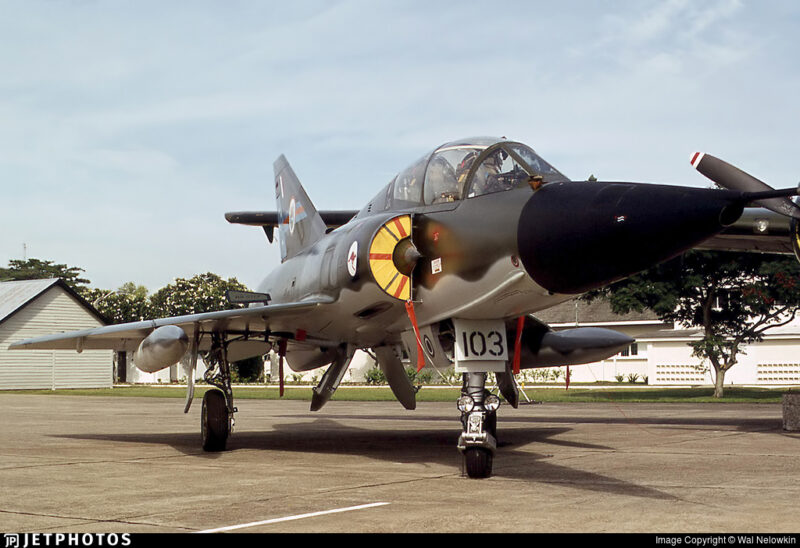Fly in a Fighter Jet Experience.
A Dream to Fly a Fighter Jet.
Is it your dream to fly in a fighter jet? It has been a dream of mine since I was a teenager & a dream that would come true in the fullness of time. The sights, sounds and the pure power of a fighter jet is truly intoxicating experience so read on and I’ll tell you about my day in a jet fighter. Fighter jets are the most powerful and incredibly dangerous vehicles you can imagine. A jet fighter possess many times the horsepower of a formula 1 grid.
They surpass the absolute brute force of a top fuel dragster doing the 1/4 mile in 4 seconds. Jet fighters of today are incredibly capable with performance to fly at speed ranges from as slow as 100 knots to Mach 2.0 plus. They do this while evading radars, passing through enemy defense systems, flying circles around older 4th generation aircraft often remaining totally unseen.
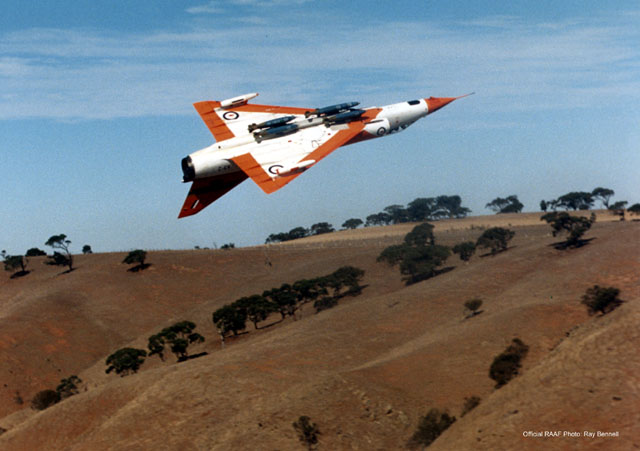
Fly in a Fighter Jet & Experience Crushing Gs.
Fly in a fighter jet of the past or present and you will experience crushing G forces that are hard to explain to the uninitiated. We find it easy to comprehend one G, which we experience just sitting in a chair reading the news on our Ipad. Experiencing over 6Gs is a totally different animal. If you could imagine six of your friends all jumping on you at the same time as you turn violently in the air trying to keep view of an attacking aircraft or evading a missile launched at you! This may give you a sense of what it’s like!
What is hard to fathom is the G forces are coming down through your head when fly in a fighter jet. The acceleration drives from above you when you fly in a fighter jet as if your in an incredibly fast elevator. If you have ever been in a really fast car or a fast bike the acceleration punches you back. In most cases you experience only 1.5Gs. This is far from what you can experience if you get the opportunity to fly in a fighter jet. A formula 1 car can experience 5Gs but what chance have you of driving an F1 car realistically?
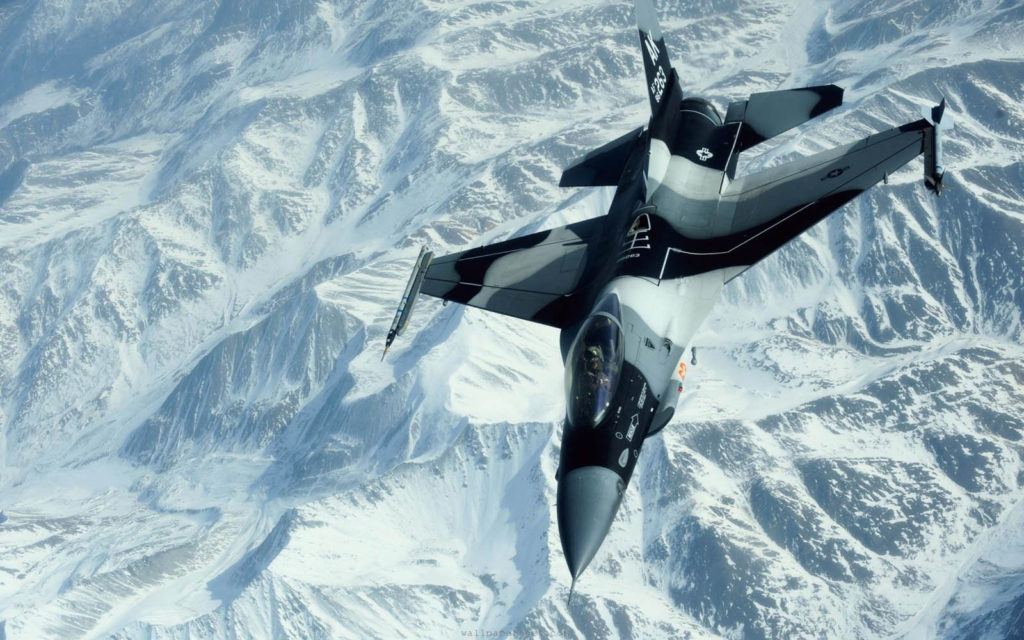
The latest jet fighters from the F-16 Viper and the French Rafale can sustain 9Gs as a matter of course. Now get nine of your happy friends to jump on you and hold your arms down. Yes it’s very hard to fathom what flying in a fighter jet is and how grueling it will be to the uninitiated.
Hi G Forces You Can Experience.
If your adventurous but dont have the opportunity to fly in a fighter jet there are roller coasters that you can experience high G forces. These can offer a very small taste of what a fighter pilot experiences in flight and combat. One off the earliest roller coasters in the late 1800s called the Flip Flap Roller Coaster. This roller coaster was responsible for many injuries and even deaths. The force of gravity or G forces was not understood at the time of its construction but much was about to be learnt about G forces.
The designers wanted to create a loop for the riders to experience some real excitement and thrills. It is unlikely they were ready ready for the resulting carnage and injuries that would be sustained at this high force level. The riders could accelerate to about 60 mph before entering a loop built of wood. Riders were not strapped in, they just sat in a open carriage so the looping roller coasters passengers could experience a crushing 12Gs. The riders who survived often injured their necks and some were ejected from the ride causing grave injuries and deaths.
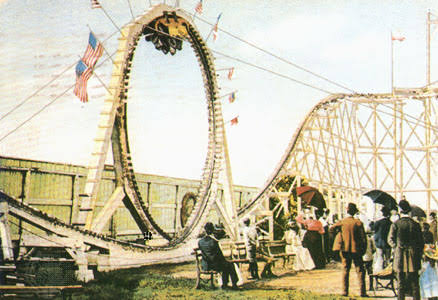
Modern High G Roller Coasters.
You won’t find any modern roller coasters today where you can experience 12Gs like flying in a fighter jet but there have been plenty available options to experience from 4 to 6.5Gs safely. Roller coasters don’t generally experience hi G forces for very long. They tend to be momentary experiences as you transition from horizontal to vertical as in the Tower of Terror. It may last one or two seconds at most but you will feel the effects of G forces.
The Tower of Terror.
The Tower of Terror is one such ride where you can experience 6Gs. The ride uses a magnetic gun to shoot the carriages out of a station accelerating along a track before turning 90 degrees skyward and shooting up vertically. The cars rise upward till they run out of energy before falling backwards. The highest point also allows you to experience zero G momentarily as it falls backwards down the vertical track again experiencing the highest Gs and being caught back in the station by the magnetic gun. This gives you the high G experience as the roller coaster changes direction from horizontal and transitions very quickly to vertical in both directions.
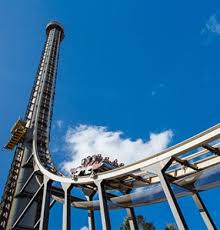
Rent a Jet.
If you have really need to fly in a fighter jet & you have $10,000 to $30,000 USD burning a hole in your pocket there are certainly opportunities to fly in a real fighter jet in places around the world. You would likely be surprised how many places will give you the opportunity to experience the ultimate fighter jet flight.
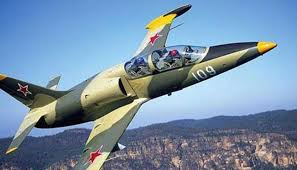
Russia will allow you to fly in a fighter jet such as the MIG 25 and MIG 29s if your adventurous. These aircraft are at your disposal to experience the full fighter pilot experience. Supersonic flight, hi Gs in maneuvers and close to space altitudes all come at a price.
The USA has a number of different options from flying propeller trainers to jet fighters to experience high G dogfights and the whole gamete of jet fighter maneuvers. New opportunities are always available if you look hard enough, have the time, will and money of course.
Incentive Flights in the Air Force.
The Air Force gives incentive flights to non pilots to fly in a fighter jet such as celebrities as well as aircraft technical tradesmen/women, non technical members on occasion. It is a big thanks you for great work and dedication or just publicity giving people an opportunity to experience a fighter jet flight. All Air Forces offer incentive flights it seems. Often you can just put your name down at operations and wait for your turn to get a flight. It is not guaranteed but frequently people get a flights and a once in a lifetime experience.
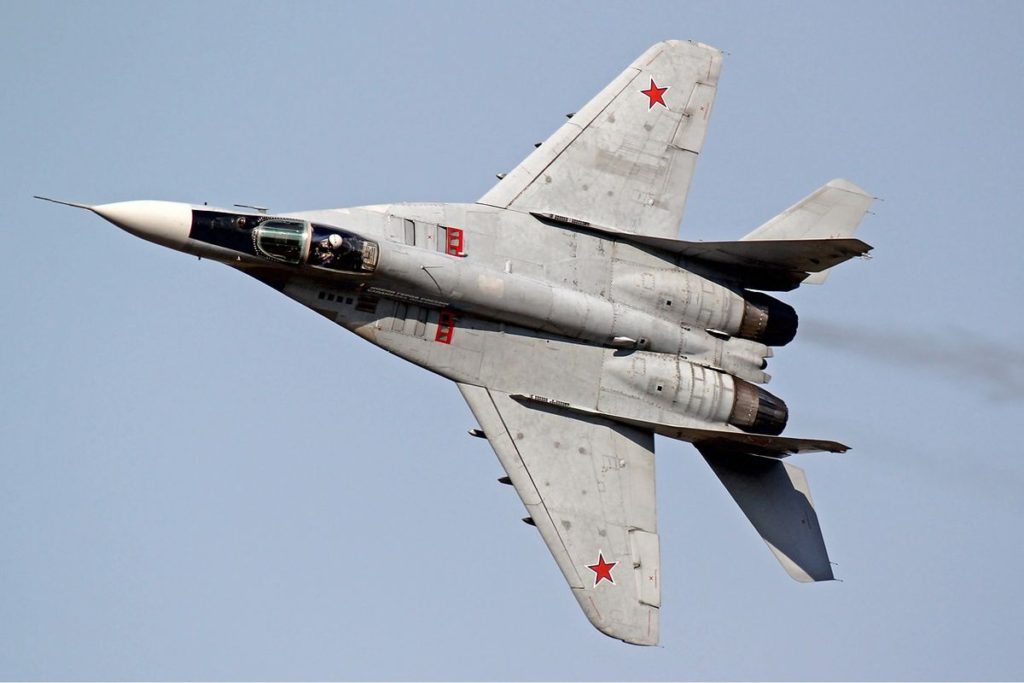
My time was to come as one of the extremely fortunate people to fly in one of the RAAF aircraft. I also flew in jet trainers, helicopters and the inevitable transports in my time in the military plus Macchi jet trainers. The helicopter experience also included firing machine guns for testing of a new gun mount for the Black Hawk door gunner. I have been truly blessed as an aviation junky.
My Experience.
A long long time ago a very young country boy from rural NSW in Australia jumped on a Boeing 707 and flew to Butterworth Malaysia. It was the beginning of an incredible three years on my first overseas posting with the RAAF. It was a trip that was to influence the rest of my life in more ways than I knew at the time.
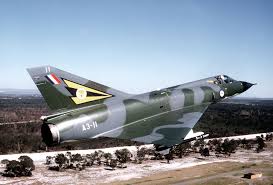
What’s an Armament Fitter (Gunnie)
I was posted to 3 Sqn, Royal Australian Air force as an armament fitter in 1984. Armament fitters as the name suggests are focused on the loading and maintaining of weapons, aircraft pylons and bomb racks. Maintaining the ejection systems on aircraft is also one of their responsibilities. Maintaining ejection seats like the Mirage IIIs Martin Baker OM4 rocket powered ejection seats and F-111 crew module, both were in use at the time.
Aircraft were the prime weapons focus but we also maintained all the armory weapons from pistols, shotguns, semi and fully automatic weapons plus sniper rifles. That was a fun part of the job as well and we all rotated through all the individual sections to get experience. We fired all the weapons after servicing. A great time for sure.
The Mirage IIIO
Fighter jets like the Mirage IIIO after 20 years of loyal service were very much at the sunset of its operational time. The incredible F-18A Hornet had been purchased by the Australian government so the Mirages days were numbered but still very much operational if called upon. The Mirage IIIO had had an illustrious career, responsible for many air to air kills with the Israeli Air force as well as many more air to ground kills. It had proven without a doubt it’s credentials as an amazing jet fighter.
Loved by its RAAF pilots and in the right hands and with great tactics they achieved kills against much newer aircraft. I saw personally USAF F-16s and F-15s in its gun camera footage that the pilots happily shared with the troops. A point of pride for sure.
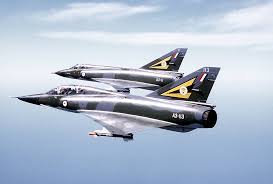
Why they got the kills is worth a quick explanation. The RAAF pilots from 3 Sqn went to the Philippines for a Cape Thunder exercise. Its the Top Gun equivalent flown in Asia. What the RAAF pilots discovered quickly was the F-15s & F-16s which were the newest toys on the block would not work together. They all wanted to get the glory of Air to Air kills on their own. Personal pride again. Pride can come at a cost.
They left each other exposed in combat and the RAAF pilots took advantage of it every time they had the opportunity. I am sure there were some red faced USAF pilots after this exercise and I am sure they learned their lesson. Oh yes of course they shot down the Mirages as well. No question about that, but the fact they got the latest F-16s at that time only operational about 3 years or so is a testament to the pilots ingenuity.
A nine G jet was an incredible thing to behold when they did demonstrations. I saw it fly rings around the Mirage III in a demo at Butterworth airbase. It was effortless for them to turn inside the Mirage. The Viper is still an incredible aircraft today.

Performance & Handling.
The Mirage III performance was the best of its day. Capable of incredible speed in its interceptor role with speeds over Mach 2 available. It was also a well rounded dogfighter with the delta wing design giving it exceptional high AoA performance. Qualities like being able to point your nose at a target at will allows it to point its weapons such as the Matra R550 IR missiles and 30mm Defa cannons easily so as to kill targets.
Mach Busting Time.
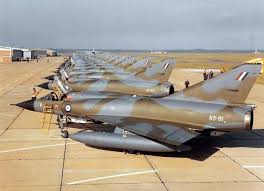
It was a hot sticky morning on the Singaporean Airbase where 3 Sqn often operated on periodic deployments. The squadron was planning to operate from there for a further two weeks more, part of a one month detachment.
The line of camouflage green Mirages had troops clambering over them getting them ready for the 9 o’clock first wave as I looked out from the pilots ready room. The young men dressed in their light blue tee shirts, dark blue shorts with ear muffs on their heads worked feverishly to prepare the aircraft. The time for the first wave to take off was approaching fast and I was very excited and nervous to be part of it.
In the operations room I stood listening to the aircrew banter with my flight suite on and helmet in hand. I had already tested the oxygen and mic in the mask and helmet while being suited up at the safety equipment section earlier. The safety equipment harness hung heavily on our shoulders. It contained survival equipment should we need to eject from the aircraft in an emergency. My helmet remained in its green safety equipment bag not required till I excited for the flight line.
Waddling like awkwardly out of the ops room like an old gunfighter I followed Wing Commander Wood, the Commanding Officer of 3 SQN out into the bright sunlight. The line of ready aircraft and waiting ground crews stood waiting for our arrival. Power carts at the ready, some running with final checks being carried out. We needed to sign for our jet before we went out on the flight line so we headed for the flight line maintenance office.
All Aboard.
Arriving firstly at the flight line maintenance building after a short walk and opened the big green door. On entered with the Wing Commander inspected the Form 500, aircraft log quickly. He checked weapons load, fuel and any unserviceabilities still present. there were none. The aircraft pages were quickly scanned for any recent issues, unserviceability for future reference.
All good, he signed for the aircraft and we headed directly out the big green door, helmets now on heads walking directly to the duel seat Mirage IIID on the flight line.
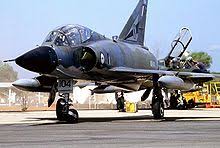
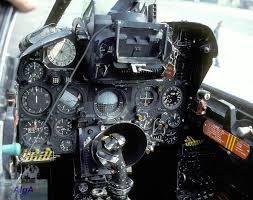
On arrival I clambered awkwardly up the yellow metal ladder with much of its paint missing. The WCDR did his preflight walk around of the aircraft. On reaching the top of the ladder, I peered over the sill and checked the ejection seat safety pins were in place.
Clambering awkwardly over the cockpit sill with all the unfamiliar equipment, I placed both feet on the ejection seat. Sitting down and getting comfortable the next job was to connect all the required seat harnesses and restraints.
My legs had disappeared into the two tunnels leading to the rudders with instruments on the center console when I sat down. I adjusted them so I could not inadvertently push them.
Reaching down to clip in my leg restraints the technician passed my first shoulder strap then the second one. Passing these through the lower straps into the five point harness locking them in place. Turning to my left I found the PEC (personal equipment connector) that supplies oxygen as well as communications.
I pushed the plate into the connector on the seat, pushed the green flat plate with oxygen hose and mic cables down into the lock with a metallic clunk. The CO came up the ladder, checked switches in my cockpit were correct and checked the command ejection selector. This ensured if the pilot ejected I would go first.
Engine Start and Takeoff.
The CO strapped in and made a few radio calls. Checking I could hear him OK he signaled with a circular motion above his head for engine start. The nearest technician moved closer and fed an air pipe down the intake to assist the engine start with an air blower just like your own leaf blower at home. The ground power unit bogged a little as the starter was selected and the engine started to spool up. There was a slight wine that built into a full high pitched scream.
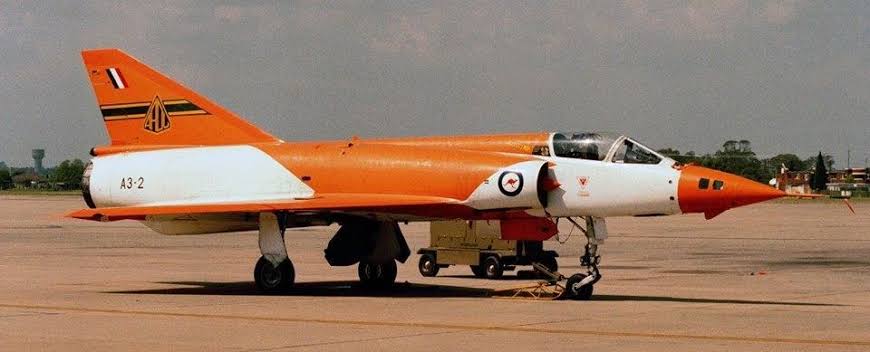
Engine started, the long canopy came down with a clunk and was locked by the pilot. Signaling to the ground crew to remove the chocks and power we were ready to go.
Taxi.
It was already getting pretty warm under the large Perspex canopy. The engine rose as the brakes were released and the Mirage edged forward. Testing the brakes the pilot tapped the brakes and the nose of the sleek fighter dipped momentarily. We turned to follow the taxi lines and headed to the runway.
It was getting very hot in the cockpit as the Mirage made its way to the threshold. The pilot cracked the cockpit and locked it open about an inch. This allowed some much needed fresh air into the cockpit. The A/C isn’t very effective on the ground.
Holding for an F-5.
There was an F-5 Tiger doing circuits so we had to wait at the threshold for a few minutes for him to finally pop the brake chute and exit the runway.
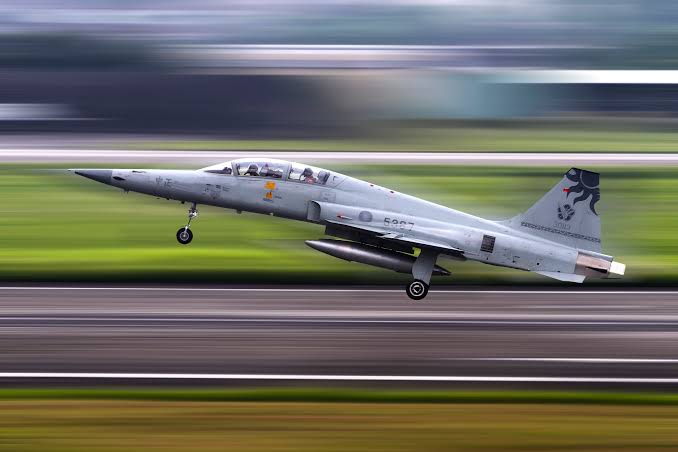
Time to Fly.
Entering the runway and lining up on the centerline the pilot set the brakes. Final checks carried out and take off approval from the tower the engine rpm rose to about 80%. The temps and pressures stabilized and the brakes released with the throttle pushed immediately to Mil power. (That’s 100% without afterburner (AB)).
The Mirage leapt forward gaining speed exponentially. It all happened so so fast my mind was left at the line up as we headed towards takeoff. Only a second or two after brake release we hit 90 knots and the throttle pivoted up and over the A/B lock, the world simply just exploded with the wine of the turbo pump pushing fuel into the back of the engine clearly audible.
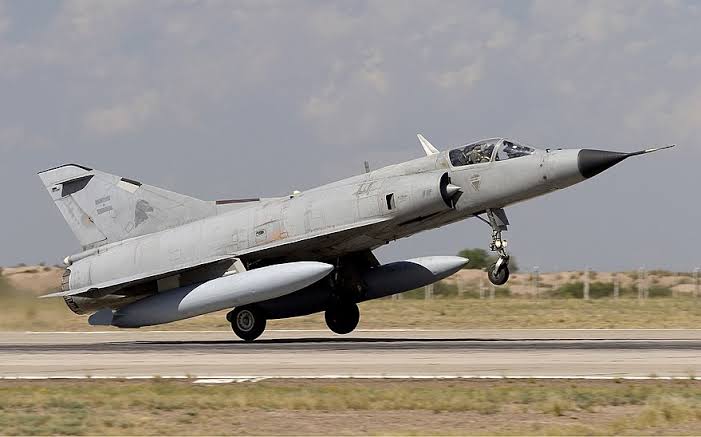
The aircraft just continued to accelerate at an unbelievable rate. The thrust from the engine just pushed you back into the seat and pinned you there with effortless acceleration. Reaching rotation speed the nose came up for a second and then it rose effortlessly into the air. Gear selected up, there was a slight motoring noise and then a clunk as they retracted into the aircraft’s sleek skin.
Departure.
The aircraft climbed rapidly and turned on course reducing throttle to remain under the 250 knots speed restriction. Departing over Singapore it was a clear day with some haze and high clouds out over the sea. Singapore looked amazing as we departed the island country for the training area out to sea. We were quickly released from general restrictions and entered the military flying area. The wine of the turbo pump came to life and again the power of the Attar engine was unleashed. The A/B came to life nearly immediately and your brain is left behind as the speed rises rapidly to over 400 knots.
You OK I was asked by the pilot and I replied “Yes Sir”. OK let’s get some altitude! As he Said this I was instantly crushed into the seat and straining to keep my mask on and head upright we pulled 4.5Gs and sky-rocketed upwards with punitive ease. Climbing past 20,000ft in what seemed like no time at all the aircraft rolled on its back and the Gs came rushing on as the pilot pulled the stick back to bring the nose back to the horizon. In doing so we roller back upright in a moment.
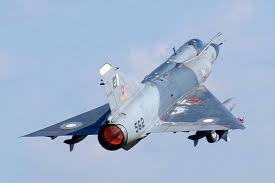
What struck me was the minimal amount of control stick movement during maneuvering in flight. There was no large movements ever! It seemed an inch or two would be more than enough in this sensitive lady of the sky to do any maneuvering.
- Joystick / HOTAS – AMAZON.com
- Rudder Pedals – AMAZON.com
- Throttle Quadrant – AMAZON.com
- Gaming Chair – AMAZON.com
- VR Headset – AMAZON.com
Delta Handling.
The delta design of the Mirage gives it amazing AoA abilities but they have to be carefully as excessive AoA could cause the aircraft to depart from controlled flight. Rolling at 720 degrees per second makes the roll rate mind boggling in the Mirage, great quality in a fighter. The pilot explained when we maneuvered he couldn’t exceed the orange AoA indexer light next to the gunsight. Green to Orange was OK but not the RED!
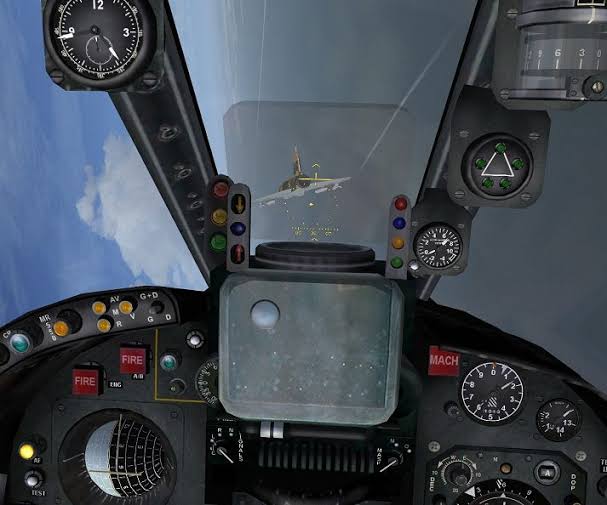
The pilot checked I was OK and I took a few long breaths of the 100% pure oxygen. I must have been breathing heavily because he asked me to take my microphone off the hot mic position. I guess he didn’t want to hear me breathing hard in his ears.
Loop Time.
OK, let’s do some aerobatics if you like? I was very ready but not ready for what was about to happen in the next 10 minutes. Let’s start with a loop. Rolling inverted the Gs pounded me again for just a moment as the aircraft’s nose dipped below the horizon.
The power went to Military or Mil. No A/B was needed as we accelerated using gods Gs to increase speed. We hit 450 knots and the Gs rushed on like an explosion. I could barely keep my head up as we climbed through the horizon at over 5G initially but as we were going inverted at the top of the loop the Gs relaxed and we hung there for a moment peacefully.
Just catching my breath the Gs came rushing back on like a freight train crushing me once again as the G meter rose to a steady 4.5 – 5Gs and stayed there. We descended gaining speed so fast it was unbelievable. We leveled off and everything went quiet for a moment. Time for a few quick breaths. This was truly exhausting!
Hi G Turn.
The A/B came to life and again it crushed us both back into the Martin Baker ejection seats. Accelerating rapidly we reached the desired speed for the maneuver. I had no idea how fast we were traveling as the aircraft rolled 90 degrees and again the world crushed me into the seat so violently I lost orientation but not consciousness!
I never once blacked out during the flight which I am still surprised at. The world was just overpowering my senses as the G meter was nailed at 6.2Gs as we flew the tightest turn possible. The aircraft did a full 360 degrees and as a point of pride the aircraft shook as we passed through our own wake just as we leveled off again completing the turn.
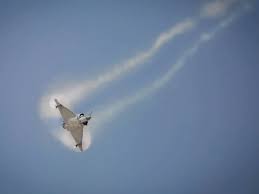
Supersonic.
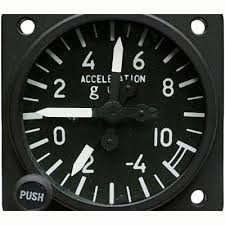
Level at about 23000ft the pilot said ” I see a few ships down there, Let’s go wake them up!” The aircraft rolled inverted as the crushing Gs attempted to take inches off my stature by crushing my spine once again. The nose dropped and the turbo pump came to life as we headed seaward at a mind-blowing rate of acceleration. This was truly violent in every sense of the word.
The Gs relaxed and we continued to descend. The altimeter was a blur as it unwound and the speed rose towards Mach 1. There was the slightest of a buffet and a cloud appeared around the cockpit and moved backward as we broke the sound barrier with impeditive ease.
Below the ships were likely met with a huge sonic boom like a bomb exploding near them. I’m sure they didn’t appreciate it for a second.
The G meter sprang instantly from one to six Gs as we changed direction and once again the crushing effects of a jet fighter maneuvering was so evident my vision greyed and tunneled. It was like looking through a straw at the world. The aircraft went from a steep nose down attitude to climbing like a SpaceX rocket in a heartbeat it seamed.
Grunting against the Gs and trying to remain conscious is physically exhausting. The joke in all of this is the pilot talked me through all of these maneuvers like he was sitting at his desk having a coffee. These people are so so special.
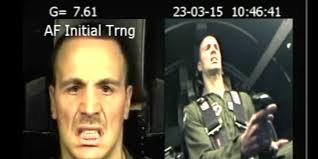
Return Home.
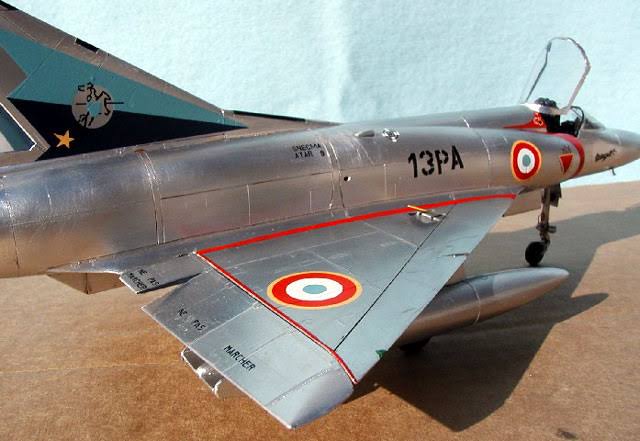
The flight finished with some aileron rolls and barrel roles before it was time to return to the air base. The transition back to controlled airspace was uneventful and thankfully gave me time to catch up on all that had just happened. But it wasn’t over as there were a couple more tricks yet to experience.
The Wing Commander said after some silence and we had leveled off on our approach to Singapore at a few thousand feet. He said check your seat belts are locked OK, which I did checking the lever on the side of the ejection seat. It was locked and I tugged on the straps to check they were locked.
All locked I informed him. He said ” I haven’t shown you the low level acceleration or how effective the speed brakes are in the jet. The speed brakes are only very small and extend out the top and bottom of the wing when activated. I thought to myself the acceleration would be great but didn’t expect how good the brakes were going to be!
The turbo pump sang its winning song and we rocketed forward at an incredible rate. In just a few seconds we were approaching supersonic speeds. I kid you not. It was just mind blowing how fast we accelerated. This is where the next shock came. The small wing air brakes were extended in a second! I thought we hit the ground. Honestly, I thought we had hit something substantial for sure.
If my harness was not locked I certainly would have had two black eyes, a broken nose plus broken teeth. The force of the braking would have flung me violently into the instrument panel in an instant if not for the harnesses. Never have I experienced brakes in a car that good.
Landing.
We headed back and flew a circuit but not before taking some pictures with the gun camera of a ship in the harbor with a gaping hole from a missile strike. There was a lot of ships damaged in the middle east at this time. Oil embargoes and Iranian missiles.
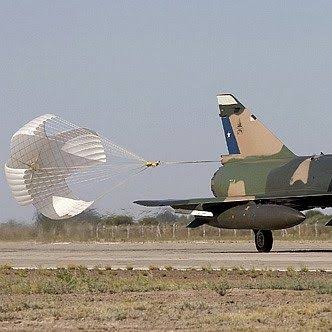
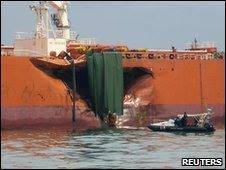
We flew the pattern and made a touch and go. The nose of the Mirage is so high it’s incredibly hard to see the runway ahead on approach. A little weaving with rudder I believe is how they keep a check on the runway. We hit the runway with a very solid thump as the drag chute released.
This to was super effective in stopping the aircraft quickly. The pilot held the nose up aero braking till it would stay up no more and applied the wheel brakes as the nose wheel touched down gently. Coming to a taxiway we turned left and as we passed the chute recovery van parked on the side of the runway, he released the chute for them to pick up.
Conclusion:
The opportunity to fly in a fighter jet was one of the highlights of my Air Force career and my life’s dream fulfilled. I hope you enjoyed my recounting of this very special event. I have done my best to relay the whole experience for you as best I can. It was amazing beyond belief. Thanks for visiting Letsflyvfr.com.

- Latest CPU’s Available Now – Amazon.com
- Get a NEW GPU Best Performance – AMAZON.com
- Upgrade RAM Here today – AMAZON.com
- Prebuilt PC Options – AMAZON.com
Author
Brendon McAliece (Aka Gunnie) is a military veteran with 23 years working on Jet Fighters, their weapons systems and ejection seat/module systems as well as munitions and R&D. Involved with flight simulation since the 1980s, he has flown all the major flight simulators over the years.
He is an Australian expat who has lived in Malaysia, UK, Saudi Arabia and more recently Thailand. He is a multi-lingual blogger who loves to share his life experiences here on LetsFlyVFR.com and DreamingGuitar.com, with his lifestyle and Travel experiences Blog plus his Dreaming Coffee website.
Learn More @ DreamingGuitar.com – DreamingCoffee.com – LetsFlyVFR.com
( HOME – BLOG – SHOP – ABOUT )
As an AMAZON.com affiliate I may earn on qualifying purchases.
